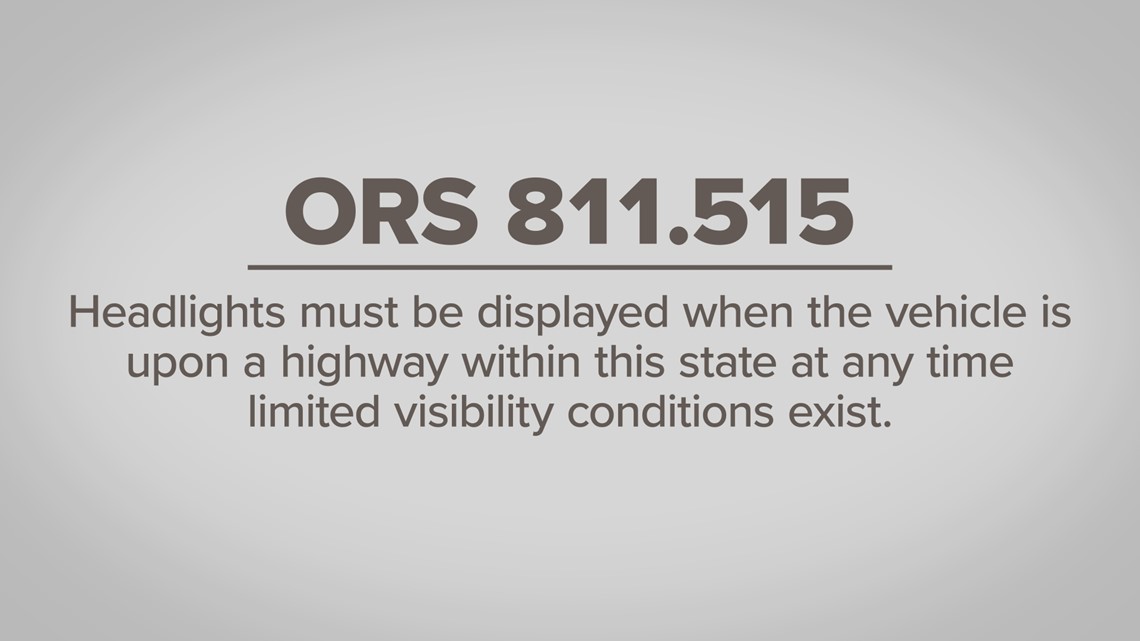PORTLAND, Ore. — Headlights illuminate the road ahead and alert other people of their presence. Some drivers use them to communicate with others, while other drivers don’t use them at all — even in the rain.
One of the more frequent complaints from KGW viewers pertains to drivers failing to illuminate their headlights in the rain and similar low visibility situations, like fog and smoke.
So what is a driver's responsibility?
The Oregon Revised Statute, ORS 811.515, pertaining to headlights is fairly clear: "[Headlights] must be displayed when the vehicle is upon a highway within this state at any time limited visibility conditions exist."
There are, of course, many other provisions that go with this.


A popular rule of thumb many people have been taught in driver's education: If you need your windshield wipers, turn on your lights too.
Lois Lents of Pacific Driver Education takes this a step further.
"I hope that people will seriously consider turning on their low beam headlights whenever they're driving their car; day or night, rain or shine. Other people will see you better," Lents said.
Daytime running lights were added to most cars years ago, but Lents said they are not as bright as low beam headlights. They may also lead to more drivers not physically turning on their lights in rainy weather or other reduced visibility conditions.
Newer cars have an automatic headlight setting. This is a good option for drivers who want to avoid having to turn lights. In newer cars, light sensors detect when it’s dark enough to require headlights, and low beams are then illuminated.
I do the Driving Me Crazy feature as a generally — but not always — lighthearted take on things that drive people nuts on area roadways. Most of us can relate, and most of these topics are your ideas. What drives you crazy? Post your videos and pictures on my Facebook page. On Twitter. Or if you're just anti-social you can email me cmcginness@kgw.com

